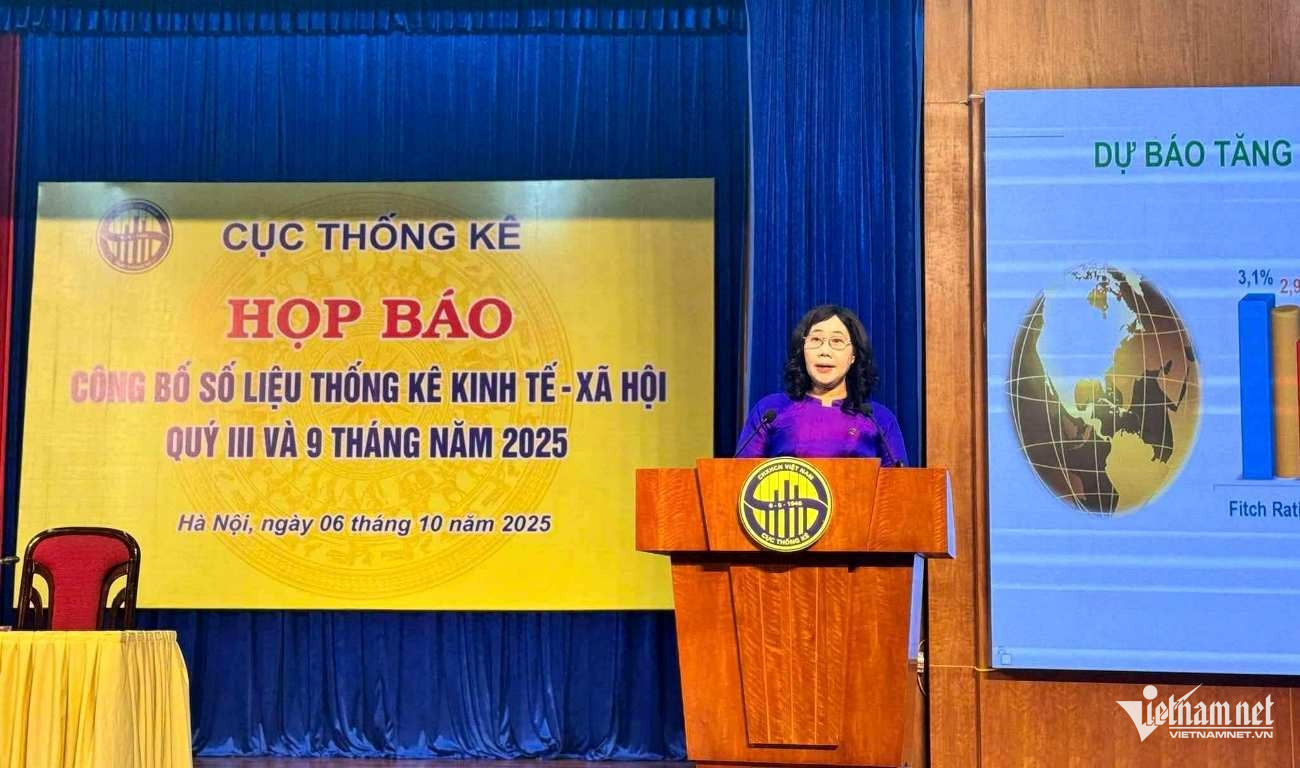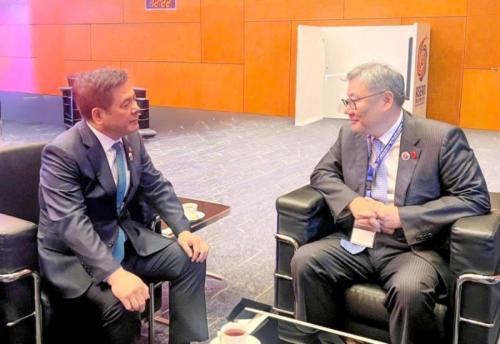Vietnam’s GDP grows 7.85% in nine months, near growth target
Vietnam’s economy posted impressive growth in the third quarter of this year, with GDP estimated to rise 8.23% year-on-year - its second-highest third-quarter growth since 2011, just behind Q3 2022’s 14.38%.
Q3 GDP marks second-highest growth in over a decade
At a press conference on October 6, Nguyen Thi Huong, Director General of the General Statistics Office under the Ministry of Finance, announced that Q3 2025 GDP rose by 8.23% compared to the same period last year.
In detail, the agriculture, forestry, and fisheries sector grew by 3.74%, contributing 5.04% to overall value-added growth.
The industrial and construction sector expanded 9.46%, contributing 46.41%, with the manufacturing and processing industry being a major driver, growing at 9.98%.
Meanwhile, the services sector grew by 8.56%, contributing 48.55% to total growth.
For the first nine months of 2025, GDP is estimated to grow by 7.85% year-on-year, just behind the 9.44% pace recorded in the same period of 2022, the highest during 2011–2025.
In the same period, agriculture, forestry, and fisheries expanded by 3.83%, contributing 5.36% to added value; industry and construction rose 8.69%, contributing more than 43%; and services grew by 8.49%, contributing nearly 51.6%.
Despite adverse weather conditions including storms and floods, the agriculture, forestry, and fisheries sectors maintained stability thanks to timely response and disaster recovery efforts.
Over nine months, added value in these sectors grew 3.83%, ranking behind only 2011, 2018, and 2021 during the past 15 years.
Specifically, agricultural value-added increased by 3.46%, contributing 3.52% to total added value; forestry grew 6.46%, contributing 0.42%; and fisheries rose 4.48%, contributing 1.41%.
Challenges ahead as year-end approaches
Looking ahead, Huong noted that the country’s economy and society will continue to face numerous challenges, particularly due to Vietnam’s high economic openness, which makes it vulnerable to global economic, political, health, and climate shocks.
She emphasized that achieving the 2025 growth target would be a major challenge and outlined several policy priorities.
These include maintaining macroeconomic stability, ensuring major economic balances, enhancing economic resilience, and regularly updating scenarios for growth, inflation, exchange rates, and interest rates.
A coordinated and harmonious approach to fiscal and monetary policy is also essential.
Accelerating public investment disbursement in the final months of 2025, especially for key national projects, is considered a top priority.
Resolving longstanding project bottlenecks and enhancing productivity, quality, and innovation in industrial and service sectors were also stressed.
Efforts should also be directed at promoting digital platforms and e-commerce to boost trade and product distribution.
Gold prices surge, FDI and exports soar
According to the General Statistics Office, the consumer price index (CPI) in Q3 2025 rose by 3.27% compared to the same period in 2024.
On average, the CPI for the first nine months of the year also rose 3.27% year-on-year.
As of September 30, registered foreign direct investment (FDI) into Vietnam reached USD 28.54 billion, up 15.2% compared to the same period last year.
FDI disbursement during the first nine months hit an estimated USD 18.8 billion, up 8.5% year-on-year, marking the highest nine-month figure since 2021.
In terms of trade, total import-export turnover in the first nine months was estimated at USD 680.66 billion, up 17.3% year-on-year.
Of that, exports rose by 16% and imports by 18.8%, resulting in a trade surplus of over USD 16.8 billion.
Domestic gold prices moved in line with global trends.
As of September 29, the global average gold price reached over USD 3,688 per ounce, up 7.9% from the previous month.
Domestically, Vietnam’s gold price index rose 6.53% in September.
On average, the gold price index for the first nine months rose 41.86% compared to the same period last year.
Regarding the US dollar, the domestic situation diverged from international trends.
As of September 29, the US Dollar Index on global markets fell to 97.48 points, down 0.65% month-on-month due to interest rate cuts by the Federal Reserve, which reduced the dollar’s appeal.
Domestically, the USD price index in September rose by 0.3% from the previous month, driven by higher import demand and public sentiment to hold dollars.
On average, the index rose 3.8% year-on-year in the first nine months.
Source: Nguyen Le
Photo: N.L.





